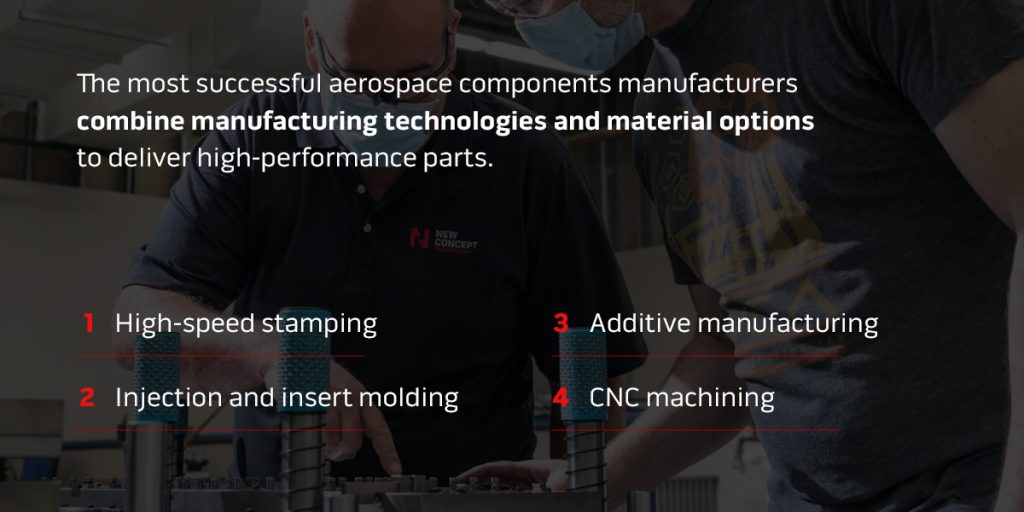

Manufacturing aerospace components demands precision, scalability and strict adherence to rigorous standards. Today, aerospace production is undergoing significant transformation as manufacturers adapt to new technologies and heightened expectations.
As the demand for lighter, stronger and more reliable aircraft grows, organizations are reevaluating every stage of component manufacturing for aerospace applications. Staying competitive requires adopting innovative processes, meeting the strictest quality benchmarks and moving quickly from concept to finished product.
Speed and precision are critical in aerospace manufacturing. Development cycles that once took years now demand fast turnaround, tight tolerances and ongoing feedback. Digital manufacturing methods, such as digital twins, model-based systems engineering, additive manufacturing and real-time simulation, have become essential for accelerating design, prototyping and production.
These technologies offer several key benefits:
By using digital manufacturing tools, aircraft parts manufacturers can boost accuracy, reduce costs and enhance innovation, positioning themselves as leaders within the aerospace manufacturing industry.
Minimizing part count is one of the most effective ways to improve performance and reduce weight in aerospace systems. Fewer components mean fewer joints, which consequently lowers failure points, reduces assembly time and often improves overall reliability. Other advantages of reducing aerospace components include:
The most successful aerospace components manufacturers combine manufacturing technologies and material options to deliver high-performance parts. No single method fits every need in the aerospace manufacturing industry, so a flexible approach allows manufacturers to optimize part performance, production speed and cost. Some effective production techniques include:

Material selection is equally important. Aircraft rely on metals like titanium for strength and corrosion resistance, aluminum for lightness, and superalloys for high performance under extreme heat and stress. High-performance polymers and composites are now frequently used for nonstructural elements, helping reduce overall mass while maintaining durability. The right material depends on the application, regulatory requirements and desired performance characteristics.
The combination of advanced processes and material choices allows aerospace parts manufacturing companies to adapt to evolving client needs and improve final product performance.
In the aerospace production industry, precision directly translates to safety. Upholding stringent quality control and compliance standards is critical throughout the manufacturing life cycle — even minor deviations can result in significant operational risks or performance issues. Aerospace manufacturers rely on advanced inspection methods and meticulous documentation to verify component accuracy and reliability, including:
Successful aerospace components manufacturers offer clients confidence that every part meets the strictest quality, safety and documentation standards. This commitment builds lasting trust and supports long-term partnerships within the sector.
The aerospace manufacturing sector is undergoing rapid transformation. Key trends shaping the industry include:
Staying ahead in the sector requires companies to continuously invest in technology, workforce skills and supply chain strategies that align with these trends.
Precision and reliability are the hallmarks of every successful aerospace parts project. The best suppliers combine advanced engineering and proven quality management to deliver parts on time and within specification.
As a leading single-source supplier, New Concept Technology uses advanced methods, including injection molding, high-speed stamping, automated assembly and precise tool fabrication, to offer some of the best high-precision manufacturing options for aerospace components. We use leading technology and industry expertise to streamline your manufacturing journey.
Contact us for a free engineering evaluation and discover how our full-service manufacturing solutions can position your business for sustained success.